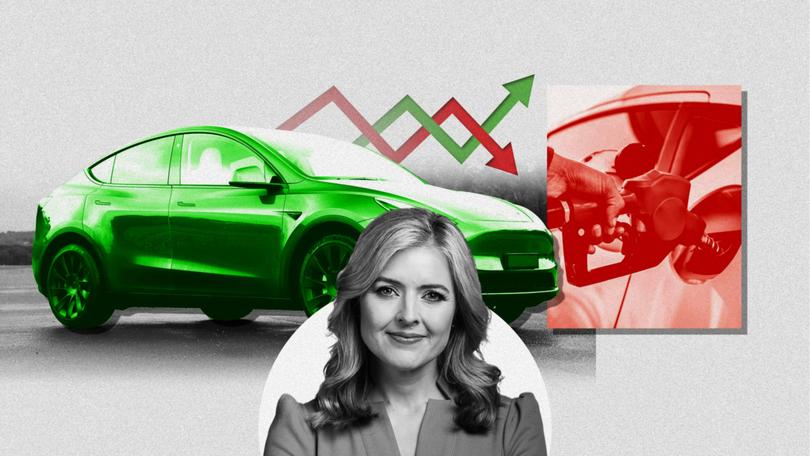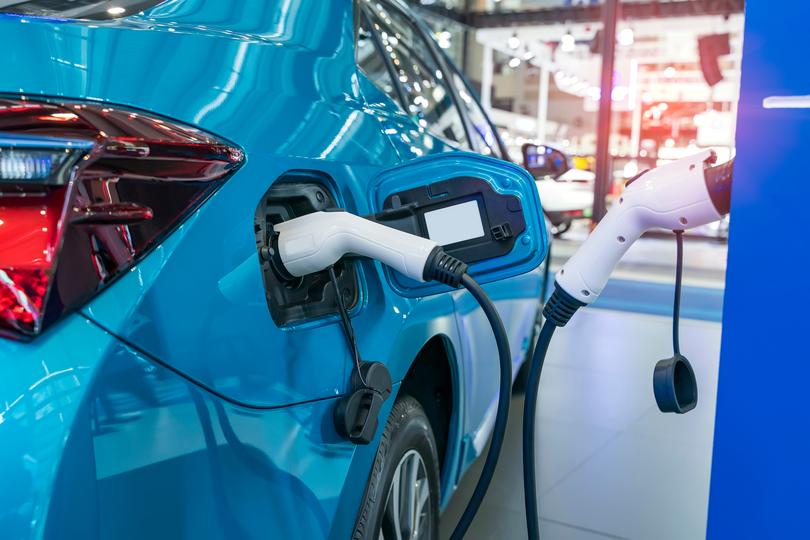GEMMA ACTON: High fuel costs could shift EV sales into top gear

Records are not what they used to be.
It seems every couple of days I’m reporting on record high gold, cocoa or coffee prices.
Of more direct impact to our daily lives, we’ve also recently seen record high insolvencies for Australian businesses and all-time high rents for tenants in every main Australian city bar Canberra (where they’re just $5 a week below the peak).
Sign up to The Nightly's newsletters.
Get the first look at the digital newspaper, curated daily stories and breaking headlines delivered to your inbox.
By continuing you agree to our Terms and Privacy Policy.Sydney drivers also confronted record high petrol prices last week which clocked in at an astonishing average of $2.23 a litre for regular unleaded while in Melbourne and Brisbane, prices are still on the rise for this cycle and could well clock new highs.
The visual snapshot provided by the ACCC shows that while Perth’s idiosyncratic weekly petrol price cycle continues (regularly peaking on Wednesdays and declining daily until a Tuesday low point), those Wednesday peaks keep resetting at higher levels.
Adelaide’s petrol prices remain the most digestible of the major cities.
What’s particularly unsettling about the record-high petrol prices is that crude oil prices are nowhere near record highs. Sure, they’ve ticked up since the start of this year but a barrel of crude oil is still priced around a quarter below where it was in 2022 and a whopping 40 per cent below where it reached in 2008.
As motoring advocacy group NRMA recently pointed out, Australian drivers are being hit by higher average gross margins (difference between the wholesale price and what we pay at the pump), thanks to petrol retailers extending the pricing cycles and therein soaking up higher profits for longer while prices are at the top.
At the same time, retailers are beefing up the margins they take when prices are at their cyclical lows.
In simple language, drivers are stumping up more — but it’s not due to the price of the underlying commodity.
I appreciate retailers’ costs have also risen, but not as far and fast as the margin inflation.
So what happens if the underlying price of crude oil does shoot higher? A scenario many are preparing for given the simmering tensions in the Middle East, even if it feels we have a little more breathing room right now following the recent, contained skirmish between Iran and Israel.
Call me pessimistic but between geopolitics and local pricing dynamics, I’m braced for petrol prices to reset their record highs before too long.
Given I’m one of the few fools who is still doing a daily driving commute between a home and a job more than an hour apart, the price of petrol is burning a disturbingly large hole in my pocket.
I am gearing up to buy an electric vehicle but have been watching prices like a hawk and expect that recent price falls are simply the start of a welcome trend.
They say we all have our price and EV manufacturers have been discovering that the price of many motorists is lower than they had hoped.

EV adoption around the world is still growing but the pace has slowed sharply and is falling short of many predictions.
The concerns raised by Australian drivers mirror those of motorists elsewhere. Yes, the EV entry point is currently more attractive than it’s ever been but it’s still some way off the entry point pricing of combustion engine cars.
Furthermore, despite charging infrastructure becoming much more ubiquitous and the distance capabilities of EVs extending each time a new model is released, range anxiety remains a bugbear.
The stalling buyer sentiment is forcing some manufacturers back to the drawing board.
Apple has shelved its plans to build its own EV despite a decade of work and large amounts of capital and human resources already allocated to the project.
Tesla recently announced plans to shed 14,000 workers — or one in 10 of its global workforce — following the first drop in its deliveries since 2020, a number that fell far short of analyst forecasts.
According to HSBC, after jiggling around its prices over the past year, Tesla vehicles (which are considered premium rather than luxury or low-cost) are now around a fifth lower.
At the low-cost end of the scale, competition is coming thick and fast to a dealership near you. According to car price comparison site thebeep.com, you can now get a GWM Ora, an MG ZS or a BYD Dolphin for less than $45,000 driveaway.
That’s a few thousand dollars’ savings compared to just a few weeks ago.
When the pricier electric MINI hits our shores and salesrooms this September, it’ll be priced $11,000 more cheaply than had been expected.
As new models continue to enter the Australian market, the pricing war is expected to persist.
While Apple is well enough diversified and capitalised to be able to cut its losses and pivot its EV resources into AI projects, many manufacturers are far more committed to the EV journey and need to fight for broader consumer adoption.
To that end, I’m hopeful about what the coming year will reveal in both choice and price for would-be EV drivers who can’t quite meet manufacturers where they currently are — but are ready and waiting for when the offers are a little more compelling.
Gemma Acton is the Seven Network’s finance editor.

